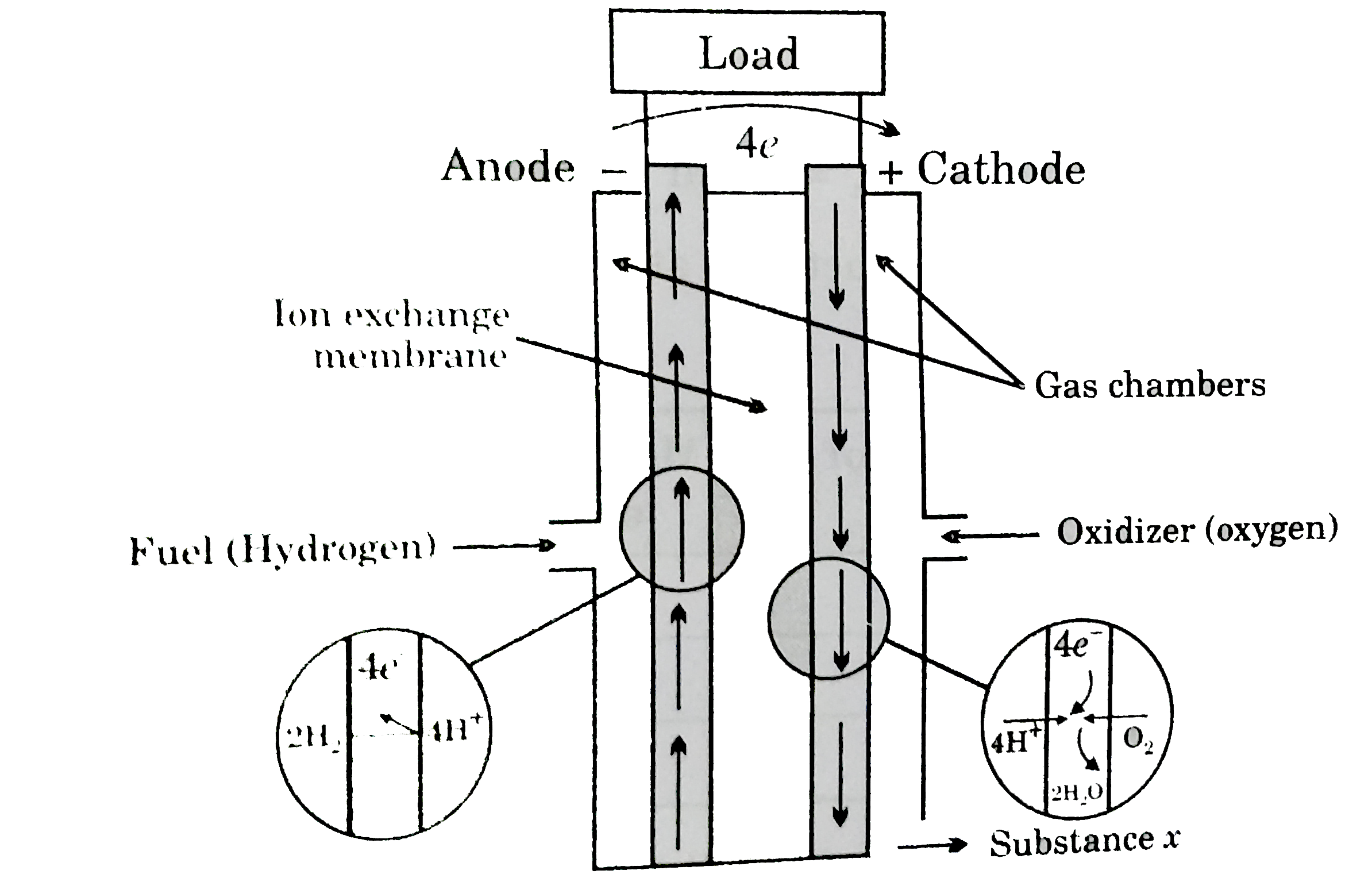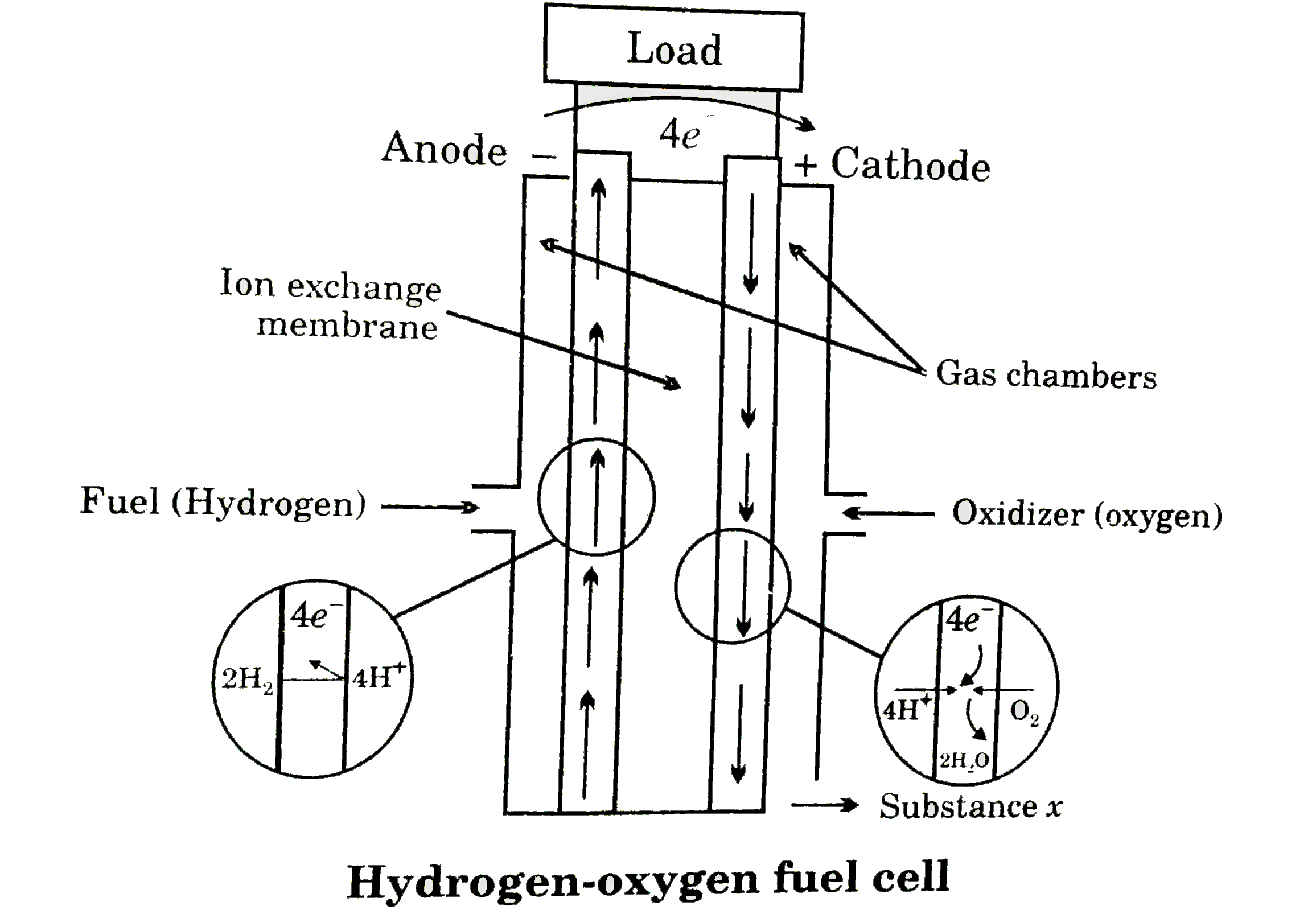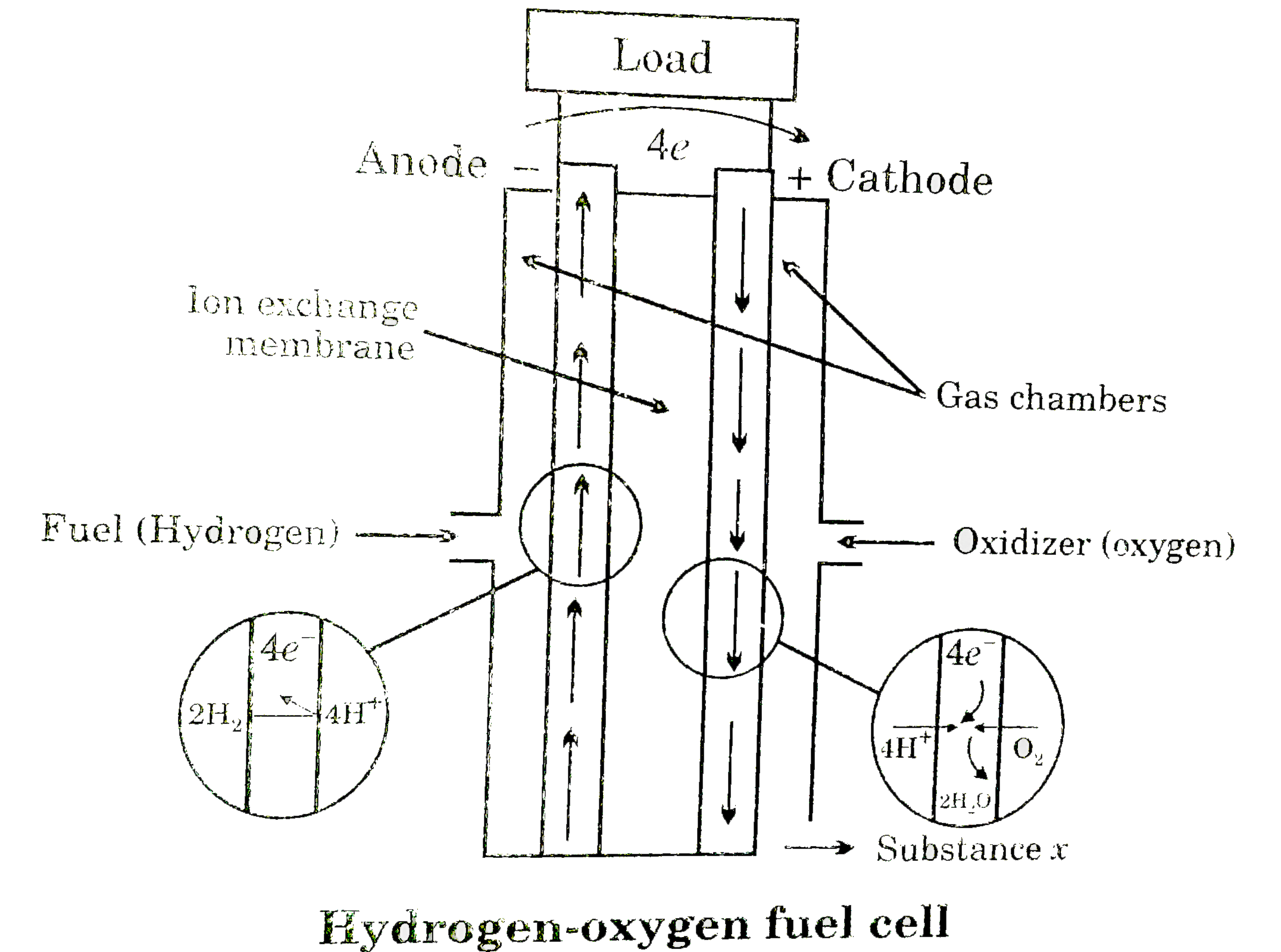Assertion: Chemosensitive area is situated adjacent to l the rhythm centre which ishighly sensitiveo CO2 and 1 hydrogen ions.
Reason: Receptors associated with aortic arch and carotidis artery can recognise changes in O2 and H+ concentration and send necessary signals to the rhythm centre for remedial actions.
If both assertion and reason are true and the reason is the correct explanation of the assertion.
If both assertion and reason are true but reason is not the correct explanation of the assertion.
If assertion is true but reason is false.
If both assertion and reason are false.
The correct Answer is:C
Chemosensitive area is situated adjacent to the rhythm. centre which is highly sensitive to CO2 and hydrogen ions.
Receptors associated with aortic arch and carotid artery can recognise changes in CO2 and H+ concentrated and send necessary signals to the rhythm centre for remedial actions.
Topper's Solved these Questions
- BOOK - A2ZCHAPTER - BREATHING AND EXCHANGE OF GASESEXERCISE - SECTION C: PREVIOUS YEARS' EXAMINATION QUESTIONS (NEET/AIPMT Questions)62videos
BREATHING AND EXCHANGE OF GASES
- BOOK - A2ZCHAPTER - BREATHING AND EXCHANGE OF GASESEXERCISE - SECTION C: PREVIOUS YEARS' EXAMINATION QUESTIONS (AIIMS Questions)8videos
BREATHING AND EXCHANGE OF GASES
- BOOK - A2ZCHAPTER - BREATHING AND EXCHANGE OF GASESEXERCISE - Section A: Topicwise Questions Topic 6 : Disorders Of Respiratory System5videos
BREATHING AND EXCHANGE OF GASES
- BOOK - A2ZCHAPTER - BODY FLUIDS AND CIRCULATION EXERCISE - Section D: Chapter-end Test50videos
BODY FLUIDS AND CIRCULATION
- BOOK - A2ZCHAPTER - CELL CYCLE AND CELL DIVISIONEXERCISE - Section D: Chapter-end Test50videos
CELL CYCLE AND CELL DIVISION
Similar Questions
In response to CO2 and H+ concentration, the chemosensitive area and, receptors associated with aortic arch and carotid artery, send necessary signals for remedial actions to
View SolutionAssertion : The role of oxygen in the regulation of respiratory rhythm is quite insignificant.
Reason : Increased PCO2 and H+ concentration inputs from chemoreceptors can activate respirotory rhytm centre to make necessary adjustments.View Solution
Knowledge Check
- Question 1 - Select One
Which of the following statements are CORRECT ?
I. A specialized center present in the medulla region of the brain called respiratory rhythm center is primarily responsible for the regulation of respiration.
II. A Chemosensitive area is situated adjacent to the rhythm which is highly sensitive to O2,CO2 and hydrogen ions .
III . Receptors associated with aortic arch and carotid artery also can recognize changes in CO2andH+ concentration and send necessary signals to the rhythm center for remedial actions.
IV The neural signal from the pneumatic center can increase the duration of inspiration and thereby alter the respiratory rate .AI,III and IVBII,III and IVCI and IIIDI and II - Question 2 - Select One
Complete the following sentence by selectrin the correct option.
Receptors associtated with aortic arch and carotid artery can recognise changes in (i)______ and (ii)______ concentration and send necessary signals to (iii)______ for remedial actions.A(i)(ii)(iii)O2CO2pneumotaxic centreB(i)(ii)(iii)CO2H+rhythm centreC(i)(ii)(iii)CO2H+apneustic centreD(i)(ii)(iii)O2H+pneumotaxic centre - Question 3 - Select One
Assertion :− A chemosensitive area is situated adjacent to the rhythm centre which is highly adjacent to the rhythm centre which is highly sensitive to CO20 and hydrogen ions.
Reason :− The role of oxygen in the regulation of respiratory rhythm is quite insignificant .AIf both Assertion & Reason are True & the Reasonn is a correct explanation of the Assertion .BIf both Assertion & Reason are True but Reason is not a correct explanation of the AssertionCIf Assertion is True but the Reason is False.DIf both Assertion & Reason are false.
Humans have to maintain the moderate respiratory rhythms to suit the demands of the body. For fulfilling that purpose, we have the
Respiratory rhytm centre in medulla =R
Pneumotaxic centre in pons =PT
Chemosensitive area in medulla =C1
Peripheral chmoreceptors in aortic arch and Carotid artery =C2
Select the correct path for the regulation of respiration.View SolutionHuman beings have a significant ability to maintain and moderate the respiratory rhythm to suit demands of the body. For it we have
Respiratory rhythm centre in medulla -R
Pneumotaxic centre in pons -RT
Chemosentsitive area in medulla -C1
Peripheral chemoreceptors in aortic arch and carotid artery -C2
Find out the correct path for regulation of respiration.View SolutionA fuel cell is a cell that is continuously supplied with an oxidant and a reductant so that it can deliver a current indefinitely. Fuel cell offer the possibility of achieving high thermodynamic efficiency in the conversion of Gibbs energy into mechanical work. Internal combustion engines at best convert only the fraction (T2−T1)T2 of heat of combustion into mechanical work. While the thermodynamic efficiency of the fuel cell is give by, η=|ΔG||ΔH|, where ΔG is the Gibbs energy change for the cell reaction and ΔH is the enthalpy change of the cell reaction. This efficiency can be upto 80%-90% also in contrast to normal heat engine efficiency which are generally about 40%

Fuel cells may be classified according to the temperature range in wich they operate low temperature (25 to 100∘C), medium temperature (100 to 500∘C)), high temperature (500to1000∘C) and very high temperature is that catalyst for the various steps in the process are not so necessary. Polarization of a fuel cell reduces the current. Polarization is the result of slow reactions or processes such as diffusion in the cell. The figure indicates the construction of hydrogen-oxygen fuel cell with a solid electrolyte, which is an ion exchange membrane. The membrane is impermeable to the reactant gases, but is permeable to hydrogen ions, which carry the current between the electrodes. To facillitate the operation finely divided platinum that function as a catalyst. Water is drained out of the cell during operation. Fuel cells of this general type have been used successfully in the space program and are quite efficient. their disadvantages for large-scale commercial application are that hydrogen presetns storage problems, and platinum is an expensive catalyst. Cheaper catalysts have been found for higher temperature operatureof hydrogen-oxygen fuel cells. Fuel cells taht use hydrocarbons and air have been developed, but their power per unit weight is too low to make them practical in ordinary automobiles. Better catalysts are needed. A hydrogen-oxygen fuel cell may hae an acidic or alkaline electrolyte. The half-cell reactions are:
12O2(g)+2H++2e−→H2O(l)E∘=1.2288V
2H++2e−→H2(g)E∘=0
H2(g)+12O2(g)→H2O(l)E∘=1.2288V
or 12O2(g)+H2O(g)+2e−→2OH−E∘=0.4009V
2H2O(l)+2e−→H2(g)+2OH−E∘=−0.8279V
H2(g)+12O2(g)→H2O(l)E∘=1.2288V
To maximize the power per unit mass of an electrochemical cell, the electronic and electrolytic resistances of the cell must be minimized. than aqueous solutions, high-temperature electrochemical cells are of special interest for practical applications. High temperature also allow the use of liquid metal electrode, which makes possibel high current densities than solid electrodes.
The advantage of using fuel cell in a motorcar could be:View SolutionA fuel cell is a cell that is continuously supplied with an oxidant and a reductant so that it can deliver a current indefinitely. Fuel cell offer the possibility of achieving high thermodynamic efficiency in the conversion of Gibbs energy into mechanical work. Internal combustion engines at best convert only the fraction (T2−T1)T2 of heat of combustion into mechanical work. While the thermodynamic efficiency of the fuel cell is give by, η=|ΔG||ΔH|, where ΔG is the Gibbs energy change for the cell reaction and ΔH is the enthalpy change of the cell reaction. This efficiency can be upto 80%-90% also in contrast to normal heat engine efficiency which are generally about 40%

Fuel cells may be classified according to the temperature range in wich they operate low temperature (25 to 100∘C), medium temperature (100 to 500∘C)), high temperature (500to1000∘C) and very high temperature is that catalyst for the various steps in the process are not so necessary. Polarization of a fuel cell reduces the current. Polarization is the result of slow reactions or processes such as diffusion in the cell. The figure indicates the construction of hydrogen-oxygen fuel cell with a solid electrolyte, which is an ion exchange membrane. The membrane is impermeable to the reactant gases, but is permeable to hydrogen ions, which carry the current between the electrodes. To facillitate the operation finely divided platinum that function as a catalyst. Water is drained out of the cell during operation. Fuel cells of this general type have been used successfully in the space program and are quite efficient. their disadvantages for large-scale commercial application are that hydrogen presetns storage problems, and platinum is an expensive catalyst. Cheaper catalysts have been found for higher temperature operatureof hydrogen-oxygen fuel cells. Fuel cells taht use hydrocarbons and air have been developed, but their power per unit weight is too low to make them practical in ordinary automobiles. Better catalysts are needed. A hydrogen-oxygen fuel cell may hae an acidic or alkaline electrolyte. The half-cell reactions are:
12O2(g)+2H++2e−→H2O(l)E∘=1.2288V
2H++2e−→H2(g)E∘=0
H2(g)+12O2(g)→H2O(l)E∘=1.2288V
or 12O2(g)+H2O(g)+2e−→2OH−E∘=0.4009V
2H2O(l)+2e−→H2(g)+2OH−E∘=−0.8279V
H2(g)+12O2(g)→H2O(l)E∘=1.2288V
To maximize the power per unit mass of an electrochemical cell, the electronic and electrolytic resistances of the cell must be minimized. than aqueous solutions, high-temperature electrochemical cells are of special interest for practical applications. High temperature also allow the use of liquid metal electrode, which makes possibel high current densities than solid electrodes.
If 567.5 mL of H2 gas at STP is fed into and is consumed by the cell in 10minutes, then what is the current output (in A) of the fuel cell?View SolutionA fuel cell is a cell that is continuously supplied with an oxidant and a reductant so that it can deliver a current indefinitely. Fuel cell offer the possibility of achieving high thermodynamic efficiency in the conversion of Gibbs energy into mechanical work. Internal combustion engines at best convert only the fraction (T2−T1)T2 of heat of combustion into mechanical work. While the thermodynamic efficiency of the fuel cell is give by, η=|ΔG||ΔH|, where ΔG is the Gibbs energy change for the cell reaction and ΔH is the enthalpy change of the cell reaction. This efficiency can be upto 80%-90% also in contrast to normal heat engine efficiency which are generally about 40%

Fuel cells may be classified according to the temperature range in wich they operate low temperature (25 to 100∘C), medium temperature (100 to 500∘C)), high temperature (500to1000∘C) and very high temperature is that catalyst for the various steps in the process are not so necessary. Polarization of a fuel cell reduces the current. Polarization is the result of slow reactions or processes such as diffusion in the cell. The figure indicates the construction of hydrogen-oxygen fuel cell with a solid electrolyte, which is an ion exchange membrane. The membrane is impermeable to the reactant gases, but is permeable to hydrogen ions, which carry the current between the electrodes. To facillitate the operation finely divided platinum that function as a catalyst. Water is drained out of the cell during operation. Fuel cells of this general type have been used successfully in the space program and are quite efficient. their disadvantages for large-scale commercial application are that hydrogen presetns storage problems, and platinum is an expensive catalyst. Cheaper catalysts have been found for higher temperature operatureof hydrogen-oxygen fuel cells. Fuel cells taht use hydrocarbons and air have been developed, but their power per unit weight is too low to make them practical in ordinary automobiles. Better catalysts are needed. A hydrogen-oxygen fuel cell may hae an acidic or alkaline electrolyte. The half-cell reactions are:
12O2(g)+2H++2e−→H2O(l)E∘=1.2288V
2H++2e−→H2(g)E∘=0
H2(g)+12O2(g)→H2O(l)E∘=1.2288V
or 12O2(g)+H2O(g)+2e−→2OH−E∘=0.4009V
2H2O(l)+2e−→H2(g)+2OH−E∘=−0.8279V
H2(g)+12O2(g)→H2O(l)E∘=1.2288V
To maximize the power per unit mass of an electrochemical cell, the electronic and electrolytic resistances of the cell must be minimized. than aqueous solutions, high-temperature electrochemical cells are of special interest for practical applications. High temperature also allow the use of liquid metal electrode, which makes possibel high current densities than solid electrodes.
For a hydrogen-oxygen fuel cell if ΔH2f(H2O,l)=−285kJ/mo≤, then what will be its thermodynamic efficiency under standard conditions (use data given in the passage if required)?View Solution

